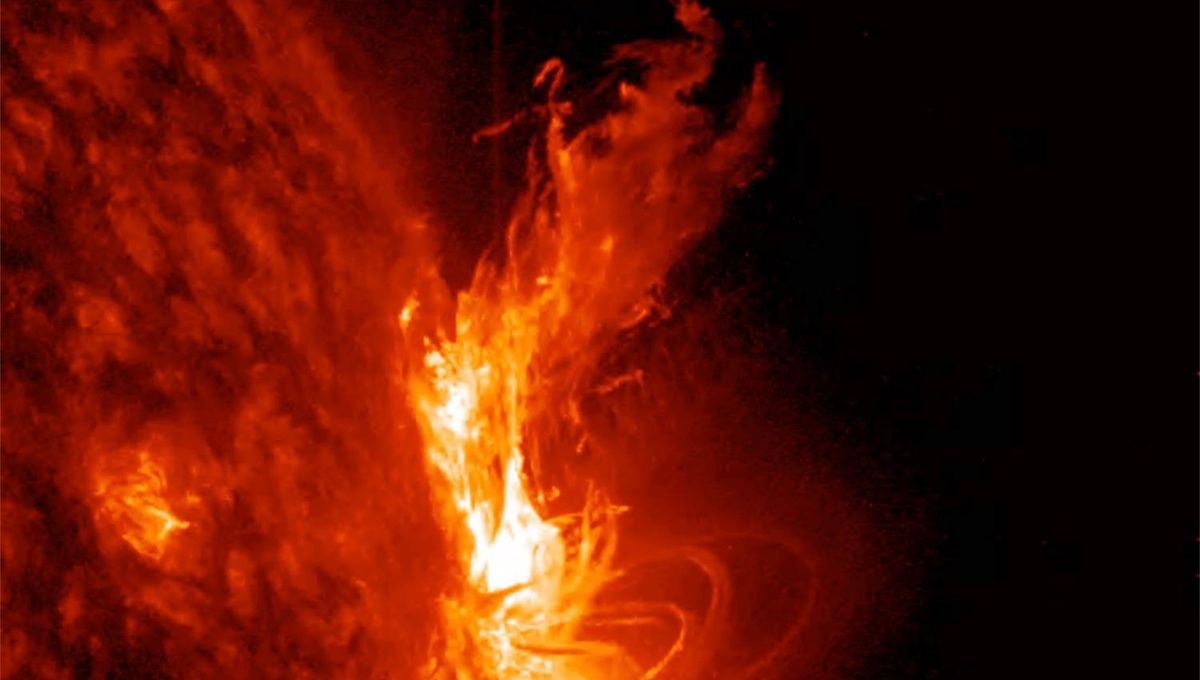
Geomagnetic disturbances caused by solar activity could be increasing the risk of heart attacks here on Earth, according to a recent study that forms part of a growing body of evidence on the topic.
Almost one year ago, NASA announced that the Sun had officially reached solar maximum, the high point of activity in its 11-year cycle. From an astrophysical perspective, we’re able to analyze our star in more detail than ever before, so this current solar cycle will be the best-studied on record. This is also why you may have heard more than usual about solar storms and incredible aurorae over the last couple of years.
But understanding the enormity of the forces behind geomagnetic activity on the level of the planet as a whole is only one part of the picture. What if we zoomed in? Can space weather really affect the bodies and health of humans down here on Earth?
According to the authors of a recent study from the National Institute for Space Research in Brazil, “numerous studies have identified a possible cause-effect relationship between [geomagnetic disturbances] and cardiovascular diseases (CVD), as well as myocardial infarction (MI).”
MI, otherwise known as a heart attack (and not the same as a cardiac arrest), was where the team directed their focus. They obtained hospital records from the public healthcare system in São José dos Campos municipality, São Paulo state, covering the period January 1, 1998, to May 31, 2005 – that’s most of solar cycle 23.
In total, they analyzed 1,340 hospitalizations for MI (469 female, 871 male) and cross-referenced the dates with geomagnetic activity data recorded at the same time. Activity was categorized as “quiet”, “moderate”, or “disturbed”.
As the authors point out, some of their findings reflected well-known trends in MI data: more men were affected than women, but the mortality rates were similar for both, and the women tended to report atypical symptoms beforehand rather than the only the classical signs like left-sided arm and chest pain.
However, adding the geomagnetic activity data into the mix revealed something else. When geomagnetic disturbances were recorded, there was a concomitant increase in MI hospitalizations and deaths. This was even more pronounced for women.
“The data show that although the number of MI cases in women is lower, in geomagnetic conditions they occur in greater proportion or even in absolute numbers,” they concluded. Although they stress their findings are not definitive, being only from one region and a relatively small sample size, it is interesting to consider these findings in the context of other studies in recent years.
In 2018, an international team of researchers reported that heart rate variability (HRV) – a measure of differences in the tiny gaps between heartbeats – changed in response to geomagnetic disturbances. Higher HRV is generally considered a marker of good health, as the autonomic nervous system is working well to respond to the environment.
This was only a small study, following 16 women for five months, but it provides some evidence that geomagnetic activity is one of many stimuli that our bodies respond to.
Building on this in 2022, a study reported that periods of intense geomagnetic disturbance may reduce HRV for up to 24 hours, based on data from 809 men over a period of 16 years. “This […] could have important clinical implications for cardiac health and preventative strategies,” the authors wrote, “as HRV is a predictor of CVD morbidity and mortality caused by the dysregulation of sympathetic and/or parasympathetic activity.”
A 2023 study looked at data from 204 territories across different latitudes on Earth to assess the hypothesis that geomagnetic instability is correlated with CVD. The data covered the period of 1996 to 2019. While they pointed out that further research would be needed to establish a causal relationship, the authors wrote that their findings “revealed a positive correlation between elevated levels of total [geomagnetic field] intensity and CVDs.”
Summarizing what we know so far in a meta-analysis published earlier this year, a team of Russian scientists said their work “confirms the influence of [geomagnetic storms] on the risk of developing MI, [acute coronary syndrome] and stroke.” However, they were only able to include six studies in their analysis.
There’s clearly a lack of data in this area, with all of the aforementioned papers calling for more research. It’s also not totally clear at this stage exactly how solar storms could cause CVD and MIs on Earth, though the HRV data looks like a promising place to start further investigation.
Space weather events have the potential to cause enormous disruption to earthly technology and infrastructure. Looking at the science – at least, what we know so far – it’s reasonable to suspect that such events can also leave their mark on the human body.
The Brazilian study is published in the journal Communications Medicine.
Source Link: Are Solar Storms Causing Heart Attacks On Earth? Here’s What The Science Tells Us